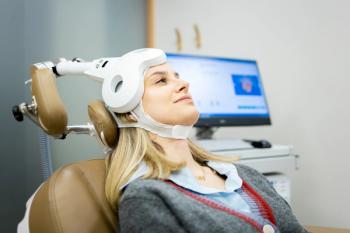
Demand for Suicide Prevention Increases
Findings underscore earlier data that indicate Americans are ready and willing to talk about mental health, plus guidance for clinicians who may have lost a patient or colleague to suicide.
New findings underscore
The
- 81% think suicide prevention should be a nationwide priority.
- 93% believe suicide is preventable.
- 66% are concerned for friends and family members with psychiatric issues and are open to talking about suicide with them.
- 78% believe both mental and physical health are essential for quality living.
Given that September is
In the event a patient dies by suicide
According to Christine Moutier, MD, Chief Medical Officer of AFSP, “Research shows approximately half of psychiatrists and approximately 20% of other mental health professionals experience the loss of one or more patients to suicide over the course of their career.” A range of emotions flood all individuals associated with the patient, but clinicians especially may experience feelings of guilt, grief, anger, or shame.
“This loss experience can be far more distressing than one might anticipate,” said Moutier. “For example, in one study, half of psychiatrists who lost a patient to suicide had scores on the Impact of an Event Scale comparable to a clinical population after the death of a parent."3
Moutier added, “Psychiatry residents are even more likely to experience the suicide of a patient related to the structure of training with trainees often caring for the most severely and chronically ill patient populations. The loss experience for health professionals also has the challenge of including both personal and professional levels of ramifications.”
Steps for clinician support
Self-care and outside support are especially important after the loss of a patient to suicide. Psychiatrists can take intentional steps to process the many emotions and grief so that they continue in the healthiest way possible in the event one of their patients dies by suicide, as follows:
- Immediately after a death by suicide and in the ensuing weeks, seek support as needed. This can take the form of debriefing, therapy, peer support, etc.
- Take steps to practice basic self-care, eg, sleep, exercise, adequate nutrition, and time for reflection.
- Participate in institutional processes such as case review, sentinel event, meeting with risk management, and root cause analyses.
- Offer to meet with the deceased patient’s family. According to Moutier, “This meeting has a clear purpose and parameters—to listen and provide support and empathy for the family, answer questions without violating patient confidentiality, and to offer sincere condolences.
- Know that you are not alone in this experience.
Additionally, Moutier said, “Ask your organizational leaders about
References
1. National Survey Shows Majority of Americans Would Take Action to Prevent Suicide. The Harris Poll. Accessed September 16, 2020. https://theharrispoll.com/national-survey-shows-majority-of-americans-would-take-action-to-prevent-suicide
2. COVID-19 Reinforces A Renewed Call to Make Suicide Prevention a National Priority (press release). September 1, 2020. Accessed September 16, 2020. https://www.prnewswire.com/news-releases/covid-19-reinforces-a-renewed-call-to-make-suicide-prevention-a-national-priority-301121593.html
3. Chemtob CM, Hamada RS, Bauer G, et al. Patients' suicides: frequency and impact on psychiatrists. 1988;145(2):224-228.
Newsletter
Receive trusted psychiatric news, expert analysis, and clinical insights — subscribe today to support your practice and your patients.













